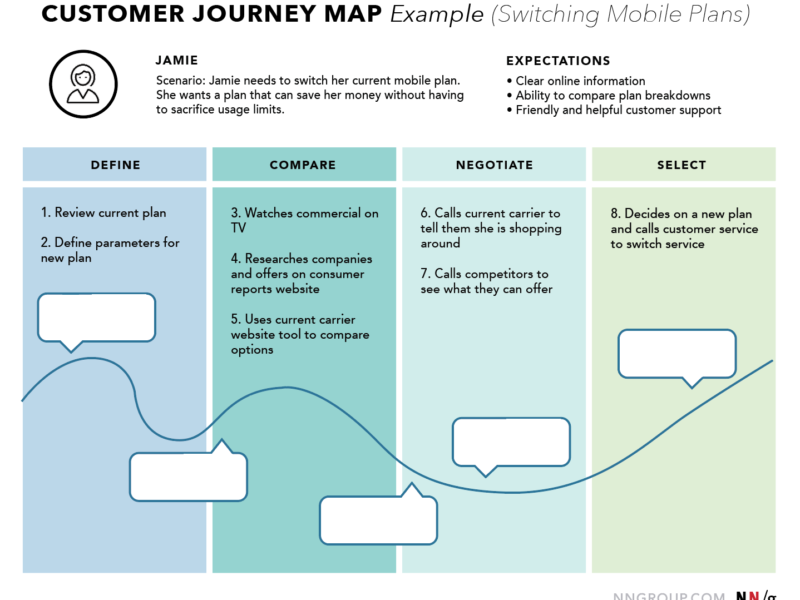According to a McKinsey study from February 2020, nearly 66% of CEOs don’t understand what their senior designers are doing.
While design-driven companies are known to outperform competitors, the tangible benefits of design remain a mystery to many entrepreneurs.
To bridge this gap, designers must articulate their value in terms that resonate with business-minded individuals: through the language of numbers, metrics, and strategic arguments.
In this comprehensive guide, we’ll explore how to calculate the ROI (return on investment) of a design project, breaking it down into actionable steps, examples, best practices, and common pitfalls.
What is ROI and Why is it Important in Design?
ROI is a measure of the profitability of an investment, expressed as a percentage. The basic formula is:
ROI = ((Benefits – Cost) / Cost) * 100%
For design projects, ROI enables stakeholders to evaluate the financial impact of a project by comparing its costs to the measurable benefits it delivers.
Benefits could include increased revenue, reduced costs, or improved efficiency—metrics that are tangible and meaningful to business executives.
While qualitative aspects like aesthetics and user satisfaction are essential, presenting design’s impact quantitatively is the key to earning buy-in from decision-makers.
The Process of Calculating ROI for a Design Project
Step 1: Identify the Project Goals
Clearly define the objectives of the design project and how they align with overall business goals. Goals might include:
- Increasing sales
- Reducing customer acquisition costs
- Enhancing user satisfaction and retention
Step 2: Determine the Expected Benefits
Quantify the expected benefits of the design project in financial terms. Examples include:
- Revenue Gains: Projected increases in sales or conversions.
- Cost Savings: Reduction in operational expenses, customer support costs, or churn.
- Efficiency Improvements: Savings from streamlined processes.
Step 3: Calculate the Total Project Cost
Include all relevant expenses, such as:
- Design team salaries
- Software tools
- Research costs
- Development and implementation fees
- Opportunity costs (resources spent on the project instead of alternatives)
Step 4: Apply the ROI Formula
Use the formula to calculate the ROI:
ROI = ((Benefits – Cost) / Cost) * 100%
Step 5: Evaluate Intangible Benefits
Design projects often yield benefits that are harder to quantify, such as:
- Improved brand perception
- Increased customer satisfaction
- Higher employee morale
These intangible benefits should be acknowledged alongside the calculated ROI.
Step 6: Regularly Review and Adjust
ROI estimates are based on projections and assumptions. Periodically review the project’s actual performance and adjust calculations to ensure alignment with outcomes.
Examples of ROI Calculation for Design Projects
Example 1: Website Redesign
Scenario: A company invests $50,000 to redesign its website, aiming to improve user experience, increase sales by 10%, and reduce customer acquisition costs by 5%.
- Goals: Improve UX, increase sales, reduce acquisition costs.
- Expected Benefits:
- 10% increase in sales: $50,000 x 10% = $5,000
- 5% reduction in acquisition cost: $50,000 x 5% = $2,500
- Total Benefits = $7,500
- Costs: $50,000
- ROI Calculation:
ROI = (($7,500 – $50,000) / $50,000) * 100% = -85%
Evaluation: While the ROI is negative, improved user experience may lead to long-term benefits like customer retention.
Example 2: New Product Line Design
Scenario: A retailer invests $20,000 in designing a new clothing line, expecting a 25% sales increase.
- Goals: Attract new customers, and increase sales.
- Expected Benefits:
- 25% sales increase: $20,000 x 25% = $5,000
- Costs: $20,000
- ROI Calculation:
ROI = (($5,000 – $20,000) / $20,000) * 100% = -75%
Evaluation: Although the ROI is negative, the project could yield intangible benefits like increased brand awareness.
Best Practices for Calculating ROI in Design
- Define Clear Goals: Align project objectives with measurable business outcomes.
- Use Conservative Estimates: Avoid overly optimistic projections to ensure realistic expectations.
- Include All Costs: Factor in direct and indirect expenses for an accurate calculation.
- Account for Timing: Use discounted cash flow analysis to reflect the time value of money when benefits span multiple periods.
- Review Performance: Regularly assess whether the project is meeting expectations.
- Acknowledge Intangibles: Highlight non-financial benefits to provide a complete picture.
Common Mistakes in ROI Calculation
- Overestimating Benefits: Unrealistic assumptions about revenue growth or cost savings can lead to inflated ROI figures.
- Underestimating Costs: Ignoring indirect expenses or opportunity costs skews results.
- Neglecting Time Value: Failing to account for when benefits occur distorts ROI.
- Ignoring Intangible Benefits: Overlooking qualitative outcomes diminishes the perceived value of the project.
- Failing to Adjust: Sticking to initial estimates without reviewing real-world performance leads to outdated insights.
Final Thoughts
The ability to calculate and communicate the ROI of design projects is a crucial skill for UX designers seeking to bridge the gap between creativity and business strategy.
By aligning design efforts with measurable business outcomes and presenting their impact quantitatively, designers can earn the trust and support of stakeholders.
Investing time in understanding ROI and adopting a data-driven mindset can transform the way design is perceived within organizations—moving from a “nice-to-have” to an indispensable component of business success.


